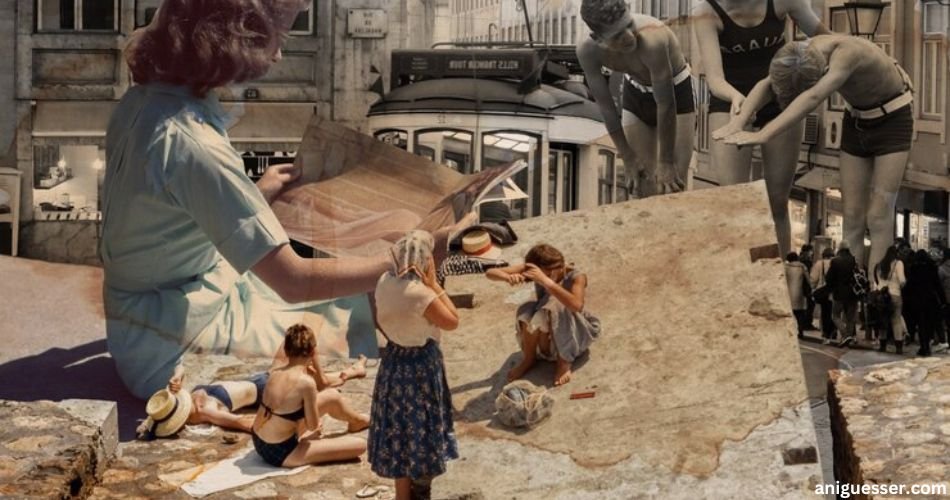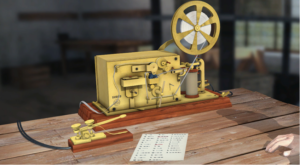Ancient Artz: The Evolution of Techniques and Symbolism
Ancient artz serves as a profound testament to the creativity and ingenuity of early human civilizations. From the intricate cave paintings of our prehistoric ancestors to the monumental sculptures of ancient Egypt, this art form encapsulates the beliefs, values, and daily lives of cultures long past. Each piece of ancient artz tells a story, providing insight into the social hierarchies, religious practices, and artistic techniques of its time. As we explore the diverse expressions of ancient art across different regions and epochs, we uncover not just aesthetic beauty but also the cultural significance embedded within. By examining these masterpieces, we can forge a deeper connection to our shared human history and appreciate the enduring legacy of the artists who shaped our understanding of the world. In an age where technology dominates, the relevance of ancient artz remains undiminished, continually inspiring modern artists and scholars alike.
The Evolution of Techniques in Ancient Art
Over time ancient artz witnessed the evolution of techniques and materials as civilizations advanced in their craftsmanship. Early art forms, such as the cave paintings of prehistoric humans, involved basic tools and natural pigments. As technology progressed, societies like the Greeks and Romans developed new methods for sculpting marble and casting bronze, allowing for more detailed and lifelike representations. Innovations in pottery, metalwork, and architecture also emerged, enabling artists to experiment with form and function. The evolution of these artistic techniques not only enhanced the aesthetic quality of ancient artz but also reflected the growing complexity of the civilizations that created them.
Origins of Art: The Dawn of Human Creativity
The roots of art can be traced back to the earliest days of humanity, long before organized societies emerged. In this primordial age, humans were already driven by a need to express themselves visually. Cave paintings and petroglyphs from over 30,000 years ago demonstrate that the urge to create and communicate is as old as humankind itself.
One of the earliest and most famous examples of prehistoric art is the cave paintings of Lascaux in France. Discovered in 1940, these paintings depict animals such as bulls, horses, and deer in vivid colors and dynamic poses. The artists used the natural contours of the cave walls to add depth to their depictions, proving that even early humans had an understanding of perspective and composition.
Another example is the petroglyphs in the Altamira Caves of Spain, which feature images of bison, handprints, and abstract symbols. These early works of art were not mere decorations but often served as spiritual or ceremonial representations, connecting humans to their environment and perhaps to a greater metaphysical reality.
Ancient Egyptian Art: A Monumental Legacy
When thinking of ancient artz, it is impossible to ignore the monumental achievements of ancient Egypt. Egyptian art, characterized by its distinct forms and adherence to strict stylistic rules, offers one of the most recognizable bodies of work from the ancient world. Egyptian art was primarily focused on religious beliefs and the afterlife, serving as a means of ensuring the immortality of the pharaohs and their subjects.
The Pyramids of Giza, along with the Sphinx, stand as enduring symbols of Egyptian grandeur. These massive structures were built as tombs for the pharaohs and were filled with intricate artworks, including carvings, statues, and paintings that depicted scenes from their lives, religious rituals, and journeys into the afterlife. The art in these tombs was designed to ensure a safe and successful passage for the deceased into the world beyond.
Egyptian art is also famous for its detailed hieroglyphics, a system of writing that combined logographic and alphabetic elements. Many Egyptian artworks were inscribed with these hieroglyphs, adding a layer of meaning that transcended the visual. Whether carved into stone or painted on walls, these symbols played an integral role in the culture’s communication and record-keeping.
Ancient Artz and Cultural Identity
Ancient artz was a powerful medium through which civilizations expressed their cultural identity. Each society, from the Egyptians to the Mayans, developed distinct artistic styles that mirrored their values, beliefs, and worldviews. These artistic expressions often included depictions of rulers, gods, and mythological creatures, and they played a vital role in storytelling, helping to pass down cultural narrativ es through generations. For instance, the intricate carvings of the Aztecs communicated both religious significance and the power of their leaders, demonstrating how ancient artz was deeply woven into the fabric of societal identity.
Mesopotamian Art: Birthplace of Civilization
Often called the “Cradle of Civilization,” Mesopotamia was home to some of the earliest known human societies, including the Sumerians, Akkadians, Babylonians, and Assyrians. Art from this region reflects the complexity of these early civilizations and their innovations in architecture, writing, and governance.
One of the most famous forms of Mesopotamian art is the ziggurat, a massive terraced structure that served as a temple to the gods. These architectural marvels were built from mud bricks and often adorned with elaborate carvings and mosaics. The Ziggurat of Ur, for example, was dedicated to the moon god Nanna and remains one of the most significant religious monuments from ancient Mesopotamia.
Cylinder seals are another iconic form of Mesopotamian art. These small, intricately carved objects were used to imprint images onto clay tablets, often serving as a signature or mark of ownership. The designs on these seals were incredibly detailed, depicting mythological scenes, animals, and geometric patterns. They reveal much about the beliefs, power structures, and everyday life of the people who used them.
Greek Art: The Pursuit of Perfection
Ancient Greek art is renowned for its focus on beauty, balance, and harmony. Greek artists sought to capture the idealized form of the human body, an effort that reached its pinnacle during the Classical period. This pursuit of perfection extended beyond sculpture to architecture, pottery, and painting.
Greek sculpture is particularly famous for its realistic portrayal of the human form. The statues of gods, athletes, and heroes were idealized representations, reflecting not just physical beauty but also moral and intellectual virtues. The statue of Zeus at Olympia, one of the Seven Wonders of the Ancient World, was a towering figure that embodied the grandeur of Greek religious and artistic achievement.
Greek pottery also offers an important glimpse into the daily life and beliefs of the ancient Greeks. Vases, amphorae, and kraters were often decorated with scenes from mythology, as well as depictions of sporting events, wars, and domestic life. The red-figure and black-figure techniques used in Greek pottery allowed for intricate designs that continue to inspire artists today.
Roman Art: Power and Prestige
Roman art was heavily influenced by the Greeks, but it developed its own distinct style, focusing more on realism and the expression of power. Roman sculptures, mosaics, and paintings were used not only for decoration but also as a means of communicating the might and authority of the Roman Empire, Portraiture was a major feature of Roman art. Busts of emperors, generals, and other important figures were created to immortalize their power and achievements. These sculptures were often highly realistic, capturing the unique features and personalities of their subjects. The statue of Augustus of Prima Porta is a prime example, portraying the emperor as both a military leader and a godlike figure, Mosaics, made from small colored stones or glass, adorned the floors and walls of Roman villas, bathhouses, and public buildings. These intricate designs often depicted mythological scenes, animals, or landscapes and demonstrated the wealth and sophistication of the Roman elite.
Ancient Indian Art: Spiritual and Symbolic
Ancient Indian art is deeply intertwined with the spiritual traditions of Hinduism, Buddhism, and Jainism. From the sculptures of deities to the intricate carvings on temple walls, Indian art was a powerful medium for expressing religious devotion and conveying complex philosophical ideas.
One of the most remarkable examples of ancient Indian art is the Ajanta Caves, a series of rock-cut cave temples that feature intricate frescoes and sculptures. These artworks depict scenes from the life of the Buddha, as well as mythological and historical events. The artistry and craftsmanship of the Ajanta Caves reflect the cultural and religious richness of ancient India.
Indian sculpture also played a central role in religious expression, particularly in the depiction of gods and goddesses. Statues of Hindu deities like Shiva, Vishnu, and Durga were created with symbolic postures and attributes, each element carrying profound religious meaning. These sculptures were often housed in temples, serving as objects of worship and devotion.
Chinese Ancient Artz: A Harmonious Blend of Philosophy and Aesthetics
Ancient Chinese art is characterized by its emphasis on harmony, balance, and the natural world. Chinese artists sought to express the beauty of nature and the principles of Confucianism, Taoism, and Buddhism through painting, sculpture, and pottery, One of the most significant achievements of ancient Chinese art is the Terracotta Army, a collection of thousands of life-sized statues created to guard the tomb of Emperor Qin Shi Huang. Each figure is unique, with detailed facial features and armor, demonstrating the remarkable skill of Chinese sculptors, Chinese calligraphy and ink painting also played a central role in the artistic tradition. Artists used brush and ink to create intricate landscapes, animals, and philosophical concepts. Calligraphy, in particular, was considered a high art form, blending beauty and meaning in every stroke.
The Role of Religion in Ancient Artz
Religion played a central role in ancient artz across cultures. From the monumental temples of Egypt and Mesopotamia to the intricate sculptures of India and China, religious themes were pervasive. Art was used as a means of worship, a way to honor the gods, and a method of ensuring favor in the afterlife, In ancient Greece and Rome, art served not only as a means of religious expression but also as a tool of propaganda, used to emphasize the power and divinity of rulers. Statues, reliefs, and architectural elements depicted gods and goddesses, reinforcing the belief in divine rule and immortalizing the achievements of emperors and kings, In many cases, the materials used in religious art were as important as the art itself. Precious metals, stones, and elaborate dyes were employed to create statues, paintings, and temples, symbolizing the wealth and power of both the gods and those who worshipped them.
The Lasting Impact of Ancient Artz
The influence of ancient artz can still be felt today. From the architectural styles of modern buildings to the sculptures and paintings in museums around the world, ancient artz continues to inspire and inform contemporary creativity. Many of the techniques, styles, and themes developed by ancient artists have been passed down through the centuries, shaping the way we view and create art in the modern world, Whether through the monumental sculptures of ancient Egypt, the harmonious pottery of Greece, or the spiritual carvings of India, the legacy of ancient artz endures, connecting us to our past and enriching our present.
FAQs about Ancient Artz
What defines ancient art?
Ancient artz refers to the creative works produced by early civilizations, typically before the fall of the Roman Empire, encompassing painting, sculpture, pottery, and architecture.
How did ancient artz influence modern art?
Ancient artz laid the groundwork for many modern artistic techniques, especially in sculpture, architecture, and the use of symbolism.
What are the most famous examples of ancient artz?
Examples include the cave paintings at Lascaux, the Great Pyramids of Egypt, the Parthenon in Greece, and the Terracotta Army in China.
How did ancient cultures use art for communication?
Ancient cultures used art to tell stories, represent religious beliefs, and convey social hierarchies through symbols, murals, and statues.
Why is ancient artz still relevant today?
Ancient artz influences modern culture and art, reflecting timeless human experiences and connecting us to our shared history.
Conclusion
Ancient artz continues to fascinate and inspire us, offering invaluable insights into the beliefs, cultures, and creativity of early civilizations. From the grand pyramids of Egypt to the intricate pottery of ancient Greece, these timeless works represent more than just artistic skill; they are windows into the past, reflecting the spiritual, social, and political structures of ancient societies. By studying ancient artz, we not only connect with the human experience across time but also gain a deeper understanding of our cultural heritage. Its lasting legacy continues to shape modern art and design, proving that the artistic expressions of our ancestors remain relevant and impactful today.
Share this content:














Post Comment